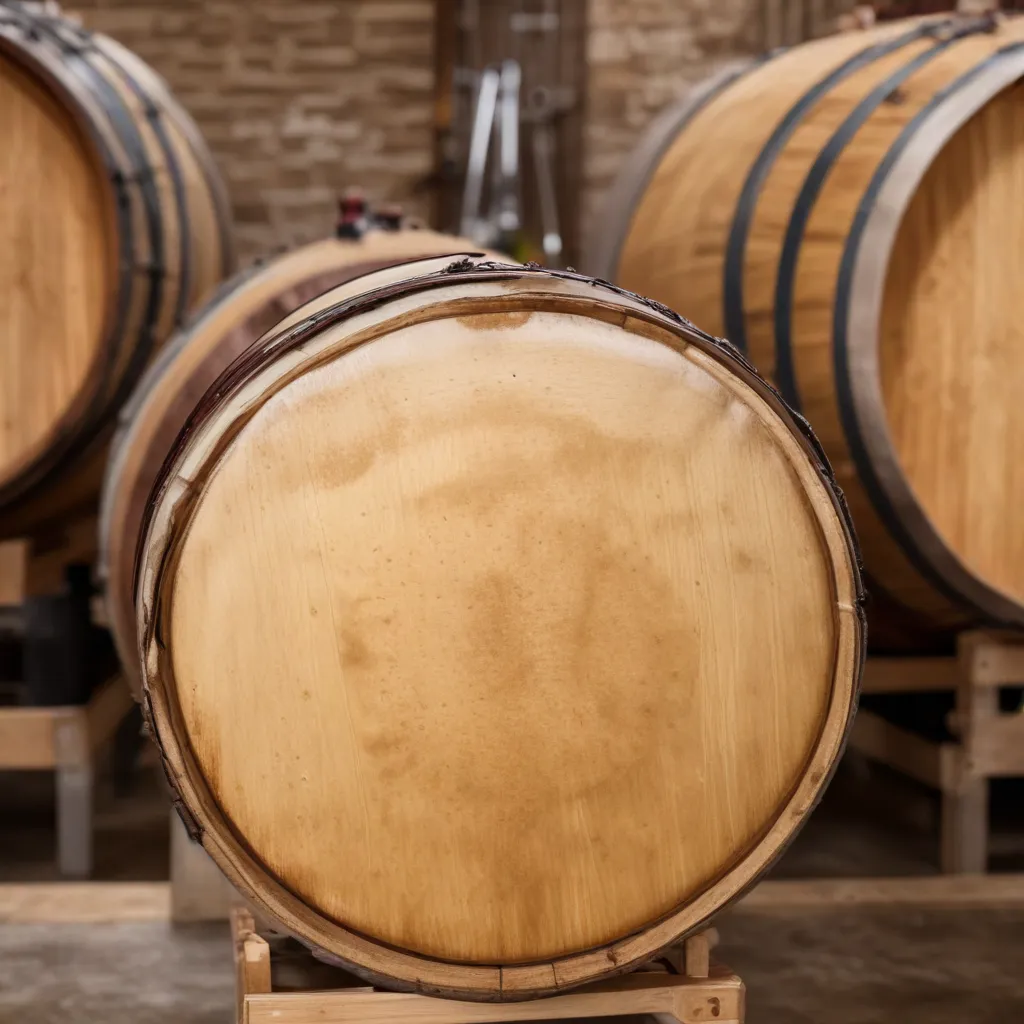
The Role of Yeast Nutrients in Winemaking: Enhancing Fermentation
As a hospitality and wine expert, I’ve always been fascinated by the role of yeast in winemaking. This microscopic fungus is the true alchemist, transforming the humble grape juice into the complex, aromatic elixir we know and love as wine. At the heart of this transformation lies the intricate dance between yeast and its nutritional requirements – a topic that deserves closer examination.
Yeast Nutrient Composition
Yeast, like any living organism, requires a balanced diet of essential macro- and micronutrients to thrive. The primary macronutrients needed by Saccharomyces cerevisiae, the most common wine yeast, include nitrogen, phosphorus, and sulfur. These elements are crucial for yeast cell growth, multiplication, and the various metabolic processes that drive fermentation.
In addition to the macronutrients, yeast also relies on trace micronutrients such as magnesium, zinc, copper, and vitamins like thiamine and pantothenic acid. While present in smaller amounts, these micronutrients play vital roles in enzyme activation, membrane integrity, and overall yeast health.
Yeast Nutrient Functions
The nutrients available to yeast during fermentation have a profound impact on the course and outcome of the process. Adequate nutrient supply supports robust yeast cell growth and multiplication, ensuring a sufficient population to efficiently convert sugars into alcohol. Conversely, nutrient deficiencies can lead to sluggish or stuck fermentations, where the yeast struggles to complete the transformation.
Beyond just facilitating fermentation, yeast nutrients also influence the development of desirable flavor and aroma compounds. The availability of certain nutrients, such as amino acids, can guide the yeast’s metabolic pathways, leading to the production of esters, higher alcohols, and other volatile molecules that contribute to the wine’s sensory profile.
Enhancing Fermentation with Yeast Nutrients
The strategic use of yeast nutrients can be a powerful tool in the winemaker’s arsenal, helping to optimize the fermentation process and unlock the full potential of the grapes.
Fermentation Kinetics
Yeast nutrients play a crucial role in regulating the fermentation kinetics, ensuring a steady and complete conversion of sugars to alcohol. By providing the yeast with an adequate supply of essential nutrients, winemakers can promote robust yeast biomass production, enabling the cells to multiply and thrive throughout the fermentation. This, in turn, helps drive the fermentation to completion, reducing the risk of stuck or sluggish fermentations.
Flavor and Aroma Development
The influence of yeast nutrients extends beyond just the fermentation itself, as they can also impact the wine’s sensory profile. Different nutrient blends can guide the yeast’s metabolism, leading to the production of specific volatile compounds that contribute to the wine’s aroma and flavor. For example, the addition of nutrient products rich in amino acids can stimulate the formation of esters, imparting fruity and floral notes, while other nutrients may enhance the production of compounds that contribute to mouthfeel and texture.
Impact of Nutrient Deficiencies
While the strategic use of yeast nutrients can elevate the winemaking process, the consequences of nutrient deficiencies can be equally impactful, and often detrimental.
Stuck or Sluggish Fermentation
Inadequate nutrient supply can lead to stuck or sluggish fermentations, where the yeast struggles to complete the transformation of sugars to alcohol. This may be due to the yeast’s inability to cope with the increasing alcohol levels or the stressful conditions of the fermentation environment. Without the necessary nutrients to sustain their growth and metabolic processes, yeast cells can become stressed, leading to the production of undesirable byproducts and the potential for fermentation to grind to a halt.
Off-Flavors and Undesirable Compounds
Nutrient deficiencies can also result in the production of off-flavors and undesirable compounds in the wine. For instance, a lack of available nitrogen can cause yeast to produce excessive amounts of hydrogen sulfide, leading to the characteristic “rotten egg” aroma. Similarly, the underutilization of certain nutrients can result in the accumulation of acetaldehyde or ethyl acetate, which can impart unwanted flavors and aromas to the wine.
Winemaker Considerations for Yeast Nutrients
Navigating the world of yeast nutrients requires a keen understanding of the specific needs of each fermentation, as well as a willingness to experiment and fine-tune the nutrient regimen.
Nutrient Supplementation Strategies
Winemakers often employ a multi-stage nutrient supplementation strategy, adding different nutrient blends at specific timing during the fermentation process. This allows them to address the evolving nutritional requirements of the yeast as the fermentation progresses, ensuring a steady supply of the necessary compounds. Additionally, the use of customized nutrient blends, tailored to the characteristics of the must or juice, can help optimize the fermentation and contribute to the desired flavor and aroma profile of the wine.
Analytical Tools and Monitoring
Effective yeast nutrient management also requires a vigilant approach to analytical monitoring. Tools such as yeast assimilable nitrogen (YAN) analysis can provide valuable insights into the must’s nutrient status, allowing winemakers to make informed decisions about the type and quantity of nutrients to add. Tracking the fermentation progress through regular specific gravity or Brix measurements can also help identify any potential nutrient deficiencies or imbalances, enabling timely interventions.
Whether you’re a seasoned professional or an aspiring home winemaker, understanding the role of yeast nutrients in the winemaking process can be a game-changer. By harnessing the power of these essential compounds, you can unlock the full potential of your grapes, crafting wines that captivate the senses and leave a lasting impression. So, the next time you raise a glass of your favorite vintage, remember the unsung heroes that made it possible – the humble yeast and the nutrients that fueled their transformation.
